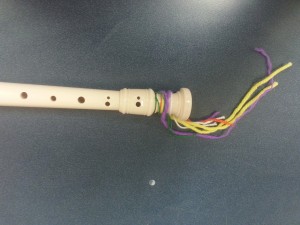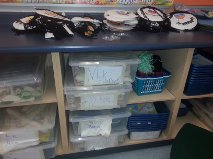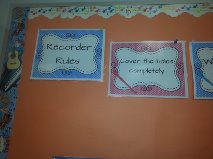I’m not a great Phys Ed teacher. Anyone who knows me knows that I don’t really do sports. My biggest claim to fame with sports is that I officiate roller derby – but my position is more mentally demanding than physically and involves more paperwork than movement, if I’m being honest.
As a kid, I was one of those students who flailed, at best, and just sort of hoped that one of my limbs would hit the ball. Maybe even in the right direction! But probably not. Mostly I just avoided everything and prayed I wouldn’t mess things up for my team.
I was not a highly sought-after pick when choosing teams.
One of my greatest challenges as an elementary school teacher in my school board has been Phys Ed. My board doesn’t generally have specialists, so I really have no choice but to teach Phys Ed. For someone who has never really played or followed many sports, this has been challenging. I have to read up on the rules of every sport before I introduce it to my students, and even then I usually have at least one student who corrects me at some point during the unit.
Once I understand the rules of a game, I can teach it. I can run drills, referee games, and get an idea of my students’ abilities. I can even recommend good players to my colleagues when they are looking at creating school teams.
I can’t help but think about the students I have who are like me, though – the ones who find traditional sports difficult and just really do not enjoy them. I have found it immensely helpful to develop a repertoire of games which develop students’ skills without being traditional sports. Obviously not every student will enjoy every game, and no matter what you do some students will not enjoy any physical activity, but I have found that these games are usually a hit with my Grade 4 and 5 students.
1. “Ballon quilles” (I guess you could call this Pinball in English)
Scatter hula hoops around the gym, usually around 8. Don’t put them too close together and don’t put them too close to the wall. In each hula hoop, put a bowling pin. Two students are assigned to each hoop, and their mission is to keep their pin from falling over. They can’t touch the bowling pin.
Using soft balls (the ones you would use for dodgeball are usually good) students try to knock over other students’ bowling pins. They have to have one foot inside their hula hoop to throw the ball, but can leave their hula hoop to go retrieve a ball to throw. They can block balls with their bodies, but if they knock over their own bowling pin by accident, it still counts.
When their bowling pin is knocked over, those two students leave the game and join the line of waiting players. The next two students in line run in and take their place, resetting the bowling pin when they get in.
I love this game because it moves fast, players change each time (they’re not allowed to change place in line just to be with their friends), and there is no winner.
2. Capture the Flag
I don’t know what it is about this game, but my students love it. I won’t even get into all of the rules I use because there are so many ways to play it. The general idea is that the class is divided into two teams, and each team has some kind of object (a “flag”) that the other team is trying to steal and get back to their territory. I use rubber chickens, which my students think is hilarious.
The game is popular with my students in part because there are many positions, not all of which require a lot of physical ability. Some students will go offensive and take the role of trying to steal the other team’s flag, but some students will play defense and keep a keen eye for opponents trying to sneak in and grab their flag.
Sometimes we go through an entire 40 minute Phys Ed period with no one winning. They don’t care. They love this game.
3. Prisoner Exchange
This is a variant of Capture the Flag that can be played in a gym. The gym is divided into four and students are split into teams as evenly as possible, with each team wearing a different coloured vest. Each quadrant has two hula hoops – one holding bean bags (I usually have around eight per team) and one empty. The point of the game is to steal other teams’ bean bags and have the most bean bags at the end of the game (usually the end of the period).
Players run into other teams’ territories to grab a bean bag. If they get tagged by someone on that team, they become a prisoner (they stand off to the corner to denote being in “prison”). They get back into the game by having their teammates pay a bean bag to release them. The empty hula hoop is a “safe zone” where they can buy some time to figure out how to get back to their territory without getting tagged.
Like Capture the Flag, there are both offensive and defensive positions. The game can get a little hectic if you have more than 25 students, so if you have one of those monstrously huge classes, you might want to adapt this somehow.
4. Bowling Pin Dodgeball
I don’t know about everyone else, but every class I have ever had has been obsessed with dodgeball. They love this game. I don’t understand the appeal of trying not to get hit by phys ed equipment. That said, dodgeball remains one of the only ways to get every single student in my class to play something actively. Why?! Why do they love this game?!
I have tried to find ways to make dodgeball less about hitting other students with the ball and more about developing precision and ball-handling skills. Usually, I play this game that I have called “Bowling Pin Dodgeball” mainly for lack of a better name.
The class is divided into two teams, as is the gym. At the back of each team’s area, four bowling pins are set up. The goal of the game is to knock down all of the other team’s bowling pins. As per usual dodgeball rules, the ball hitting you below the shoulder means you’re “out” and move to the wall, so there is still a dodgeball element to the game.
To get back into the game, one of your teammates has to catch the ball. When a ball is caught, the person who has been out the longest goes back in. To facilitate this, I have students stand at the wall in a line, with the most recently eliminated player going to the end.
There’s another way to get your teammates back into the game, though. We have basketball nets in six places around our gym, so I made a rule that if you get a basket on one of the nets on the other team’s side, then everyone on your team who is out gets to return to the game. Even better: you get to put a bowling pin back up!
What I’ve found is that my students spend more time trying to catch a ball AND trying to make a basket that they rarely even end up throwing the ball at each other. They feel like they’re playing dodgeball, but really they’re working on throwing/catching skills. Shhh, don’t tell them. 😉
For my kindred spirits who don’t feel super successful with traditional sports, this game offers them a few options. Some like to defend the bowling pins. Some like to lie in wait and try to roll a ball at the opposing team’s pins to knock them down unexpectedly. Some end up being the last member of their team still in the game, then get to feel like a real hero when they get a basket and let their whole team back in.
I didn’t invent any of those games. They were all introduced to me by colleagues, with adaptations happening from year to year as I refine the rules (or my students suggest new ones). They’re just a few of the games that I keep in my regular rotation (and get requested by students time and time again).










